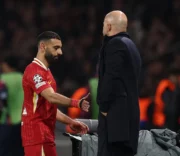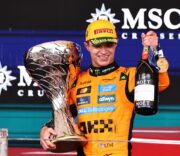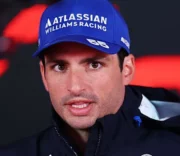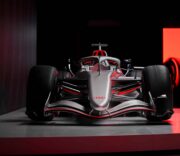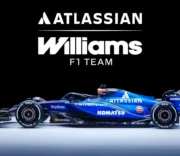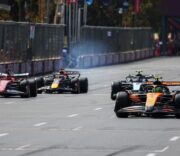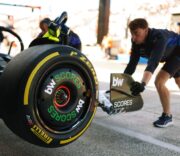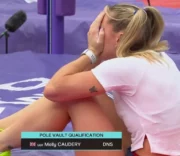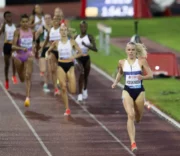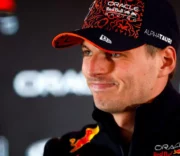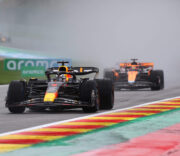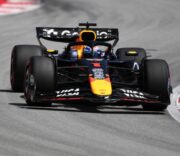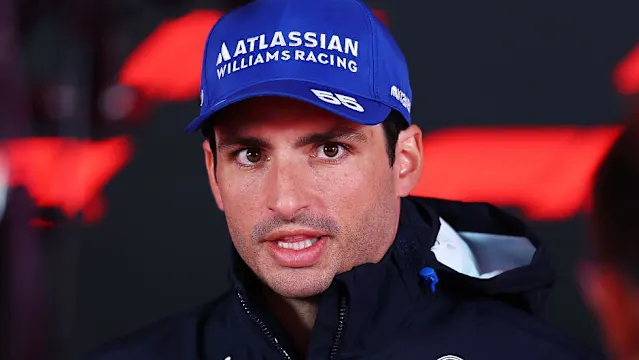
Carlos Sainz, Williams driver and GPDA director, has called for an “urgent” meeting with the FIA to address inconsistencies in racing guidelines. Speaking on media day ahead of the Las Vegas Grand Prix, Sainz highlighted the 10-second penalty handed to McLaren’s Oscar Piastri at the Brazilian GP as a breaking point.
The incident unfolded at Turn 1 after a safety car restart, where Piastri, on the inside of Mercedes’ Kimi Antonelli and Ferrari’s Charles Leclerc, locked his brakes in reaction to Antonelli’s move toward the apex. The contact sent Antonelli into Leclerc, eliminating the Ferrari driver from the race. Stewards penalized Piastri for not maintaining sufficient overlap (his front axle not alongside Antonelli’s wing mirror) and deemed him “out of control” due to the lock-up.
Sainz defended Piastri vehemently: “Everyone that’s really raced a race car knows he could have done nothing to avoid an accident there and he got away with a 10-second penalty. It’s something that I don’t understand.” Even Leclerc, who retired due to the crash, backed Piastri, stating the penalty was undeserved.
A Pattern of Controversial Penalties
Sainz pointed to a series of incidents this season where penalties felt unjust, including three involving himself:
- Dutch GP (Zandvoort): 10-second penalty for contact with Racing Bulls’ Liam Lawson.
- Italian GP (Monza): Penalty for Haas’ Oliver Bearman after a mutual collision—Sainz called it undeserved and told Bearman so immediately post-race.
- US GP (Austin): 10-second penalty (converted to a grid drop in Mexico) for clashing with Antonelli.
“I didn’t understand my Zandvoort penalty… There’s been not one but multiple incidents this year that for me are far from where the sport should be.”
Guidelines: Strict Interpretation vs. Real Racing
The core issue lies in the FIA’s driving standards guidelines, issued at the start of 2025 after driver consultations but without GPDA approval. Drivers argue they’re applied too rigidly, ignoring the “common sense and experience” of wheel-to-wheel racing.
Sainz specifically criticized the interpretation of lock-ups: “Whenever we see a lock-up, a steward immediately interprets that as out of control. A lock-up not always means out of control. You can lock up and still make the apex.” He cited his own Austin lock-up in reaction to Antonelli and Piastri’s in Brazil as examples where control was maintained despite the brake lock.
Mercedes’ George Russell, another GPDA director, agreed: “There’s a bit of a wording… that if a car is locking up it’s deemed to be out of control. This corner in Brazil is totally cambered… that tyre is not even on the ground, so that tyre is locking but you’re totally in control.” He advocated for treating each incident, corner, and circuit differently and suggested permanent stewards for consistency.
Qatar Meeting: Drivers Push for Change
The GPDA has scheduled a meeting with FIA stewards at the Qatar Grand Prix next weekend to review a “list” of contentious incidents, as described by Sainz’s teammate Alex Albon. Albon noted the FIA’s openness: “There’s no ignorance… It’s not this ‘you versus us’ approach. We do appreciate that as drivers.”
Sainz emphasized the urgency: “After what I saw in Brazil, it’s something that’s not quite working.” While the FIA welcomes the dialogue to refine guidelines—stewards can already deviate if needed—the talks could lead to clearer rules or structural changes like permanent stewards.
As F1 heads into the final three races of 2025, this push for clarity aims to ensure penalties reflect the sport’s high-stakes reality rather than rigid black-and-white rules.


